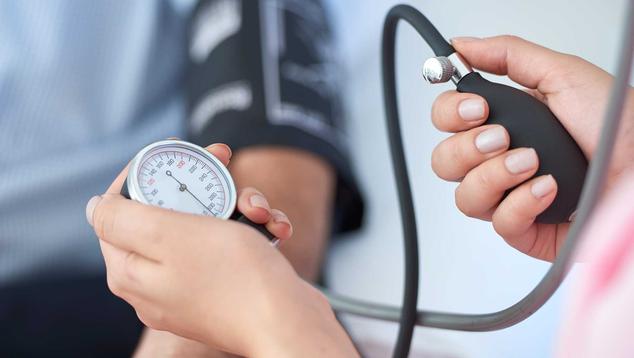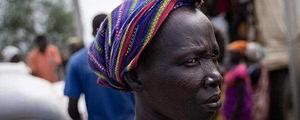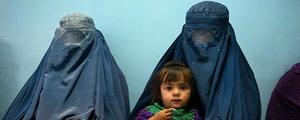Story Highlights
- Billions of women untested for potentially life-threatening conditions
- More women are sad, angry and worried
- More women are in physical pain, experiencing health problems
WASHINGTON, D.C. -- The pandemic may be over, but the latest Hologic Global Women’s Health Index survey shows women’s health is no better now than it was at the height of it. In some cases, women’s health today is even worse.
Data from Year 3 of the annual global women’s health study, conducted in 143 countries and territories in 2022, reveal billions of women aren’t getting tested for deadly diseases, are continuing to suffer from physical or emotional health issues, and are struggling to afford food.
Key Findings
Testing for diseases that kill millions of women every year remains low.
Most women surveyed said they hadn’t been tested for cancer, diabetes, high blood pressure, or a sexually transmitted disease or infection in the past 12 months, meaning that billions of women -- including those in age groups most at risk -- went untested for potentially life-threatening conditions for the third consecutive year.
- Testing for high blood pressure increased slightly in 2022. In the Year 3 survey, 36% of women reported being tested for high blood pressure in the previous 12 months -- which is a small but statistically significant increase from 33% in Year 1 (2020), the first year of the COVID-19 pandemic. Still, this means that nearly 2 billion women did not get tested, including more than half a billion women over the age of 40, who are recommended to get tested yearly.
- Cancer testing rates are no better than at the height of the pandemic. Just 11% of women were tested for any type of cancer in the past 12 months -- which is statistically unchanged from the 12% reported in Years 1 and 2 (2021). This means 89% of women worldwide went untested for the top killer of women in many countries. The cancer testing rate for women in the key 40 to 49 age group -- the age at which women with average risk should be tested for breast and colorectal cancers -- is just 11% in Year 3, down from 17% in Year 1 and unchanged from Year 2.
- Testing remains flat for one of the fastest-growing chronic diseases in the world -- diabetes. Fewer than one in five women worldwide (19%) were tested for diabetes in the past 12 months -- unchanged from levels in Years 1 and 2. This means 81% went untested in each of the past three years.
- Few women are getting checked for STDs/STIs. Amid reports of surging numbers of STD/STI cases in many countries since the pandemic, just 10% of women in 2022 reported being tested for an STD/STI. This number remains unchanged from previous years and leaves nearly 2 billion women of reproductive age at risk of infertility, increased maternal and fetal mortality, and deadly diseases linked to STDs/STIs.
Negative emotions continue to run high.
More women are sad, angry and worried now than they were three years ago. About four in 10 women say they experienced worry and stress during a lot of the previous day; three in 10 experienced sadness, and one in four experienced anger.
These emotions were rising before the pandemic, but COVID-19 exacerbated them -- exacting an even bigger toll on women’s health. Only stress is statistically the same as it was in Year 1.
Women worldwide continue to be more likely than men to report feeling negative emotions. For example, women are 20% more likely than men to say they experience sadness daily.
Women don’t feel any safer or more satisfied with their healthcare.
Many women -- including more than four in 10 young women between the ages of 15 and 24 -- do not feel safe walking alone at night where they live.
Worldwide, more than one in three women (34%) do not feel safe walking alone at night in their own community -- meaning that nearly 1 billion women feel unsafe. However, while the proportion of women who feel unsafe is down slightly from Year 2, it is the same as the percentage in Year 1.
Nearly seven in 10 women are satisfied with the availability of quality healthcare where they live and believe most pregnant women in their communities receive high-quality prenatal care. Slightly more women feel this way in Year 3 than did in Year 2, but their attitudes are largely the same as in Year 1.
Nearly 1 billion women are still struggling to afford food.
When women can meet their basic needs, their life expectancies go up and the mortality rates of mothers, infants and children go down. But for nearly 1 billion women worldwide, basics like food and shelter remain unaffordable. Three in 10 women worldwide say they cannot afford the food or shelter that they or their families need.
While the number of women struggling to afford housing has not changed over the past three years, in Gallup’s historical trends on this question, the percentage of women struggling to afford shelter has almost doubled in the past decade.
More women are in daily physical pain and experiencing health problems.
Nearly a billion women -- one in every three surveyed in 2022 -- say they spent a lot of the previous day in physical pain. And one in four women -- which translates into nearly 700 million -- have health problems that keep them from doing normal activities.
The percentage of women reporting experiencing physical pain during a lot of the previous day is unchanged from Year 2, but up from 30% in Year 1. In all three years, more women than men have reported experiencing physical pain.
Twenty-four percent of women say they have health problems that prevent them from doing things people their age normally can do -- statistically the same as the 25% in Year 2 who said this, but up from 20% in Year 1.
Implications
In 2020, Hologic and Gallup launched the Hologic Global Women’s Health Index in response to the urgent need for more timely, comprehensive and actionable data on global women’s health. The inaugural report, released in 2021, provided a troubling baseline account of the state of women’s health worldwide. It showed that every country in the world -- even the wealthiest -- had work to do regarding women’s health.
Data from the Year 3 survey further underscore that across most dimensions of their health, women’s health remains seriously at risk. And even where there are improvements, the pace of progress is far too slow.
These results are consistent with recent gender findings from the United Nations’ progress on the 2030 Sustainable Development Goals. Only two of the U.N.’s indicators that track women’s health are even close to their targets.
Reigniting progress on women’s health will require urgent action from global leaders, countries and women’s health advocates worldwide. Over the next several years, the Index survey will serve as an important accountability tool in these efforts, tracking indicators that align with or complement global commitments, including the SDGs.
Read the latest report to see how women in different regions and countries fared on the Index.
To stay up to date with the latest Gallup News insights and updates, follow us on X.




